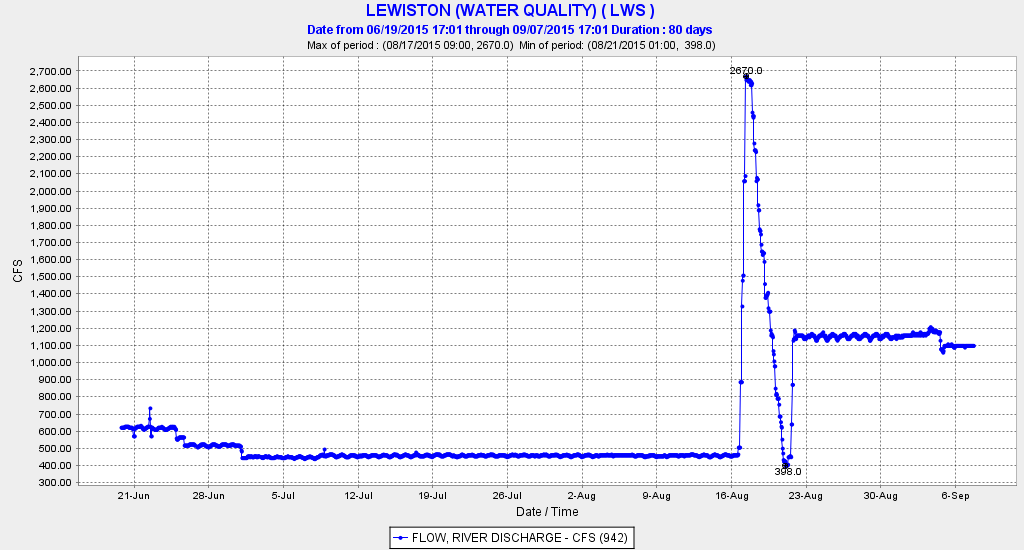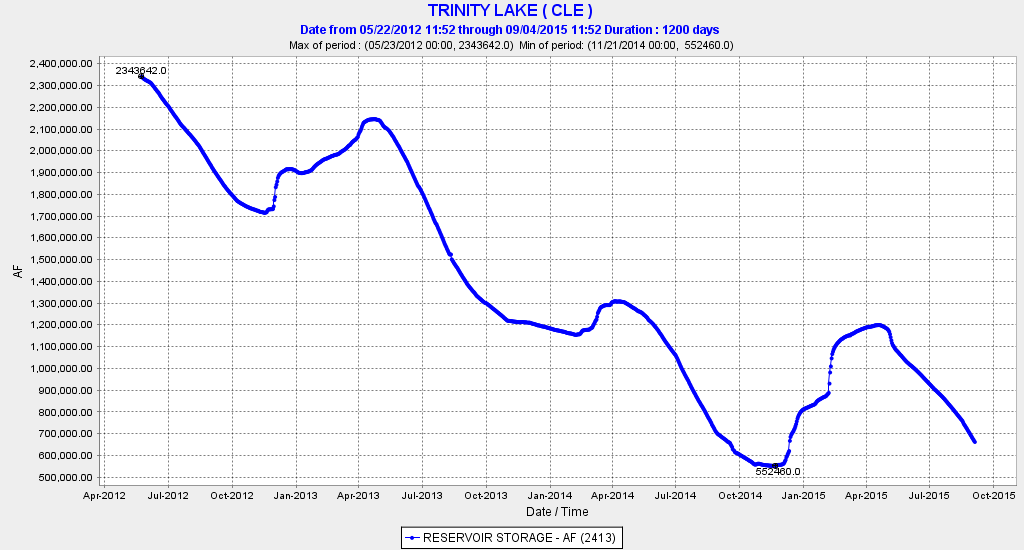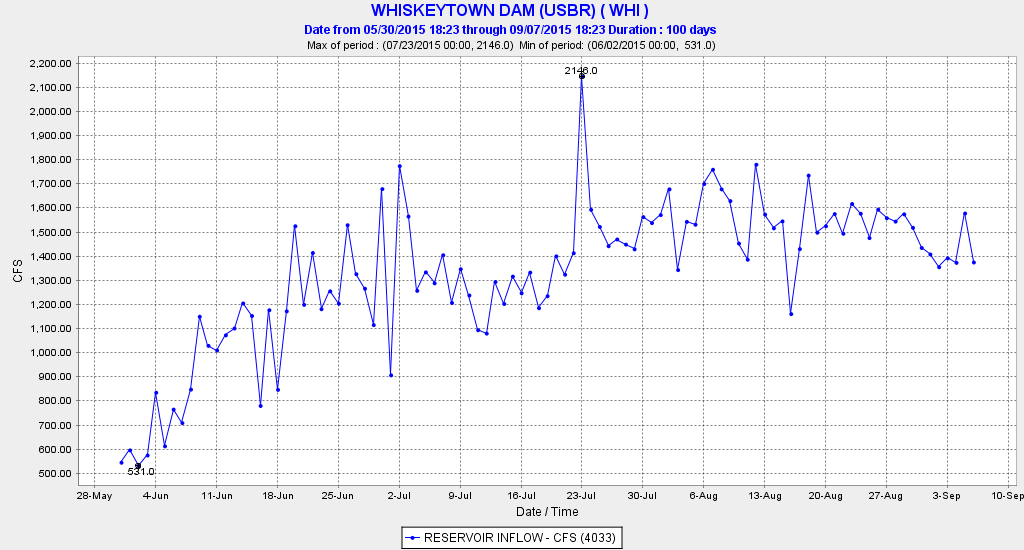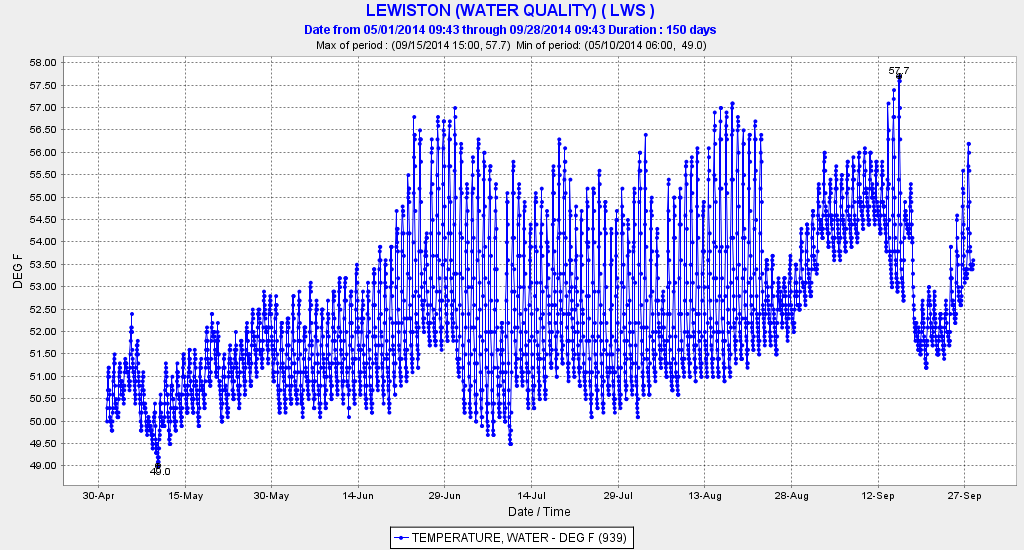This is part 3 of a four-part series on the effects of the Shasta-Trinity Division on Sacramento and Trinity-Klamath salmon. Part 1 is an introduction to the series. Part 2 is a discussion of the effects of the Shasta-Trinity Division on Sacramento River salmon. Part 3 is a discussion of the effects of the Shasta-Trinity Division operation on Trinity-Klamath salmon.
Operations of the Shasta-Trinity Division affects Trinity River salmon as well as salmon in the lower Klamath River downstream of the mouth of the Trinity River. The main effect on the Trinity-Klamath salmon comes from the export of approximately half of Trinity Reservoir’s inflow to the Sacramento River, resulting in lower Trinity storage. This in turn may cause lower Trinity-Klamath flows and higher water temperatures in the Trinity River and lower Klamath.
National Marine Fisheries Service (NMFS) is in the process of conducting a separate consultation on the effects of the Shasta-Trinity Division operations on listed Coho salmon in the Trinity River. NMFS is committed to ensuring appropriate coordination between the analysis and results of Sacramento Winter Run Opinion and the forthcoming Coho opinion. The NMFS OCAP BO RPA1 will be analyzed in the Trinity Coho Opinion, and the OCAP BO may be adjusted as necessary to avoid jeopardy to Trinity-Klamath Coho salmon and adverse modification of their critical habitat.
The biggest threat to Trinity salmon results from the drawdown of Trinity Reservoir as Trinity water is exported to the Sacramento River. Without adequate carryover storage, Trinity reservoir cannot be counted on to provide sufficient cold-water flow to the Trinity and lower Klamath Rivers. Without a sufficient cold water pool in Trinity Reservoir, warm water from the reservoir can threaten the Trinity, Lower Klamath, and Sacramento River salmon. While the large die-off of salmon in the lower Klamath in 2002 may not be directly attributable to low warm water flows to the upper Trinity River below Lewiston Reservoir, pulses of cold water from Trinity Reservoir in late summer under conditions like 2002 have averted similar die-offs in 2014 and 2015. Pulses of cool water released from Trinity Reservoir continue this month despite unsuccessful attempts by Central Valley water contractors to stop that action. So far, the cold water pool in Trinity Reservoir appears adequate to save Trinity and Klamath River this year despite its ongoing depletion by exports to the Sacramento River. Approximately three quarters of the water released from Trinity Reservoir this summer has gone to the Sacramento River.

Trinity Reservoir water released to Trinity River from Lewiston Reservoir summer 2015. Note recent flow releases to flush and cool the lower Trinity and Klamath.
- The Reasonable and Prudent Alternative(s) in the National Marine Fisheries Service’s Biological Opinion for the long term Operations and Criteria Plan for the State Water Project and the Central Valley Project. ↩




